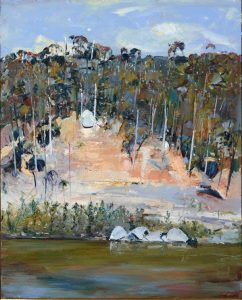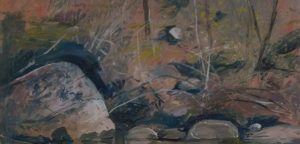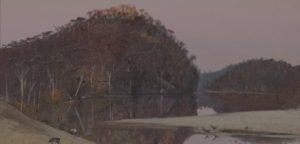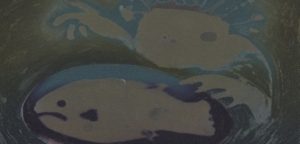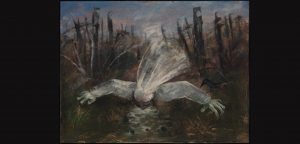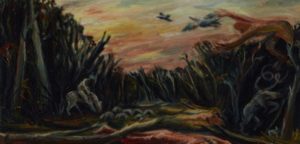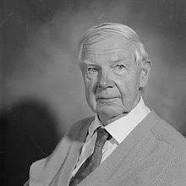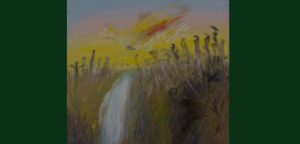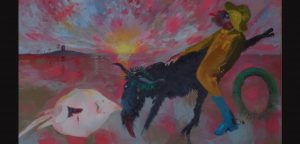Arthur Boyd was born on the 24th of July in 1920 in Murrambin, a suburb of Melbourne, Victoria district,
1920 - 1999
Arthur Boyd
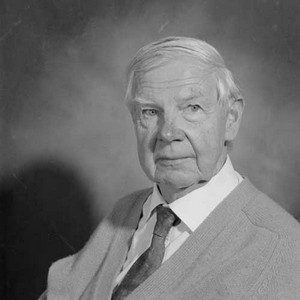
description
Arthur Merrick Bloomfield Boyd was one of the most significant artists of Australia of the 20th century, a painter, ceramist, sculptor, engraver who has worked in England for more than 10 years.
Born into the family of artists, in the suburb of Melbourne, Murrambine.
His father was a sculptor and a ceramist and his mother was a painter; both older brothers became artists: David became a painter, Guy was a sculptor. Arthur left his school at age 14 to devote himself to painting.
The work of A. Boyd, based on his outstanding talent and powerful, though somewhat gloomy imagination, played a big role in the development of the newest art of his country. He was one of the first artists to raise important social themes in painting. He was recognized during his lifetime and awarded many prizes and orders. He donated the vast territory of his estate and most of the paintings to the Australian people.
The series of paintings created by Boyd and his very life are an integral part of the history of Australia, and not just its culture.
Key ideas:
– The early paintings of A. Boyd were portraits and views of the sea near the port of Philip, where he lived with his grandfather, a landscape painter. Having moved to the city, he got acquainted with European refugees, and the subjects of his works, as well as their form, changed – fanciful images of the city appeared there and the palette became more gloomy.
– Even more work moved to the genre of picture-descriptions after his service in the army – Boyd’s expressionistic military paintings depicted cripples, other hardships that the war brings. Agitated lines, expressing the painful emotions of the young author, appeared in his technique. The artist turned to Bible in search of plots for the expression of horror and suffering. The picture “Exile” is based on the narrative about punishment, and the canvas “Australian scapegoat” with its mystical color and fantastic landscape, which gives it an expressionistic character, conveys the author’s thoughts about betrayal, feelings of guilt.
– The theme of the work was strongly changed by the trip to remote areas of Australia and learning the aboriginal life. The series “Love, marriage and death. Semi-Kast”, known in the world as “The Bride”, which made the master famous, was a plot with the figures of the “groom”, always rough and brutal, and almost ethereal white “bride”. The series rightly deserved a canonical place in the history of not only Australian art with a powerful statement of questions of social justice and the unusual technique of execution. Boyd depicted tribal rituals, rituals of indigenous people in the outback, which are not properly assimilated with Western traditions. Not intending to present a simplified symbolism of the alliance between white and black Australia, the artist made both characters metis. At the same time, the complexity of the narrative is aggravated by doubling the figure of a real bride with her phantom form, which is the object of an impossible dreamy desire for the groom.
– Later, unable to abandon the topic, the artist developed images – turned the bride into a half-nymph, whose ephemeral presence is hardly felt, then into an insect-like creature. This continuation of the series led to a combination of the figure with Abstract Surrealism.
– Social upheaval did not leave Boyd’s paintings in the future. He responded to the Vietnamese war with the series “Nebuchadnezzar”, where the character perishes in the fire, then under the waterfall. Mythological by theme, the series is made in an expressionistic manner – bright colors, aggressive lines. Returning to Australia in the 1970s, the artist led “ecological wars”, protesting against the thoughtless destruction of nature, depicting its consequences.
– In the final period of his creative career, Boyd painted landscapes, on which he was inspired by the river Sholhaven. At first, he considered it stormy and wild, but then was captured by the theme, creating thousands of paintings, depicting the tremendous might of the terrible river landscape, the fortress of the banks, the approach of dusk, the glowing clouds in the deep sky. The poetic style of these paintings is imbued with allegorical narratives about the state of a man. This is a fusion of European and Australian painting.
– As a teenager, Boyd developed a special drawing technique: the paint was applied to the canvas thickly, often with his fingers and palm. He believed that this allows one to paint more freely and get more pleasure from the process itself.
1920
1930
1940
1950
1957 - 1959
1960 - 1963
1964 - 1969
1971 - 1975
1975 - 1979
1980
1993
1995 - 1997
1999
The birth of the artist
Attended classes at the National Gallery of Melbourne
Attended classes at the National Gallery of Melbourne, where he met J. Bergner, who had an ideological influence on him. He lived on the peninsula of Mornington with his grandfather, the head of the Arthur Merrick Boyd dynasty. The namesake actively supported his grandson.
During the Second World War, he served in the Cartographic Division
During the Second World War, he served in the Cartographic Division. After the war he founded a workshop with J. Perceval in Murrambin, became a member of the group “Evil Penguins”, struggling for a new language of painting. He created a large fresco in his uncle Martin’s house in Harkava, painted landscapes of north-western Victoria. At the end of the decade, he turned to the biblical subjects.
Made a trip around central Australia
Made a trip around central Australia, was outraged by the living conditions of the aborigines. These impressions formed the basis of a series of 31 paintings, known as “Brides” and brought world fame to the artist. He began to work on a nine-meter ceramic sculpture ordered for the Melbourne swimming complex for the Olympic Games.
"The Brides"
The series “The Brides” was exhibited in Melbourne and had a great response; a mixed reaction was caused by the paintings and on subsequent shows in Adelaide and Sydney. The artist’s works were exhibited at the Venice Biennale in 1958, together with the paintings by A. Striton. He joined the “Antipodes” – a group of artists founded by art critic B. Smith, who organized an exhibition at the Whitechapel Gallery in London (1959).
The family moved to England
The family moved to England. The first London exhibition was held at the gallery Zwemmer and included works from the series “Brides”. The artist’s works were widely exhibited, gained an international reputation, continuing to develop Australian subjects. The exhibitions were organized by the famous Whitechapel Gallery in London (in 1961) and the Tate Gallery (in 1962), a retrospective exhibition was held at the Whitechapel Gallery a year later.
He created the ceramic triptych "Romeo and Juliet"
He created the ceramic triptych “Romeo and Juliet” for the 400th jubilee of Shakespeare; received orders for ballet and opera decorations; participated in the exhibition from the collection of Merts at the Gallery of Corcoran; his works were exhibited in Washington (1967), at the Gallery of Richard Demarco (1969, Edinburgh, Scotland). Began the series “Nebuchadnezzar” as a protest against the war in Vietnam in 1966.
Returned to Australia
After receiving a grant from the Australian National University, the already famous artist returned to Australia. He held the post of art adviser in Canberra for some time. Later, the family settled on the plot on the river Sholhaven in New South Wales, which inspired the artist to create numerous landscapes. His exhibitions were held in Canberra, at the gallery Skinner, Perth.
Presented several thousands of works at the National Gallery of Australia
Presented several thousands of works (sculptures, engravings, paintings) at the National Gallery of Australia, held exhibitions in Melbourne, the Rudy Comon Gallery (Paddington, New South Wales), the Fremantle Arts Center (Western Australia). He created illustrations for P. Porter’s book “The Lady and the Unicorn”; expanded the themes of hedonism, violence and betrayal in the works “Narcissus”, “Mars”, “The Magic Flute”. A television documentary “The Man of Two Worlds” about Boyd’s life and work was created.
Represented Australia at the Venice Biennale in 1988
He worked in ceramics, created works for the theater, performed a tapestry for the interior of the parliament in Canberra, which became one of the largest in the world; his paintings were actively exhibited: at the Fischer Gallery, London (three times); Hong Kong Arts Center (twice); Tokyo, Japan, 1984, Smithsonian Institution, Washington, 1985; Bertush, Newcastle (thrice); Los Angeles, USA, 1987; Commonwealth Institute, London, 1988. Represented Australia at the Venice Biennale in 1988 (8 works). In 1989-1990, he worked in England.
A retrospective exhibition of the artist's works was held in many cities of Australia
The Boyds gave the Australian people 1,100 hectares of their own land on the Sholhaven River, so that it would remain a reserve. A retrospective exhibition of the artist’s works was held in many cities of Australia.
Was recognized as the "Man of the Year"
Was recognized as the “Man of the Year”, organized a joint exhibition of the creative dynasty Boyd, which represented six family members: brothers, son Jamie, nieces Lenore and Tessa Perceval. Arthur himself, the patriarch of the family, selected 80 paintings and 40 sculptures for the exhibition.
The death of the artist
He passed away on the 24th of April in 1999, in Melbourne.

